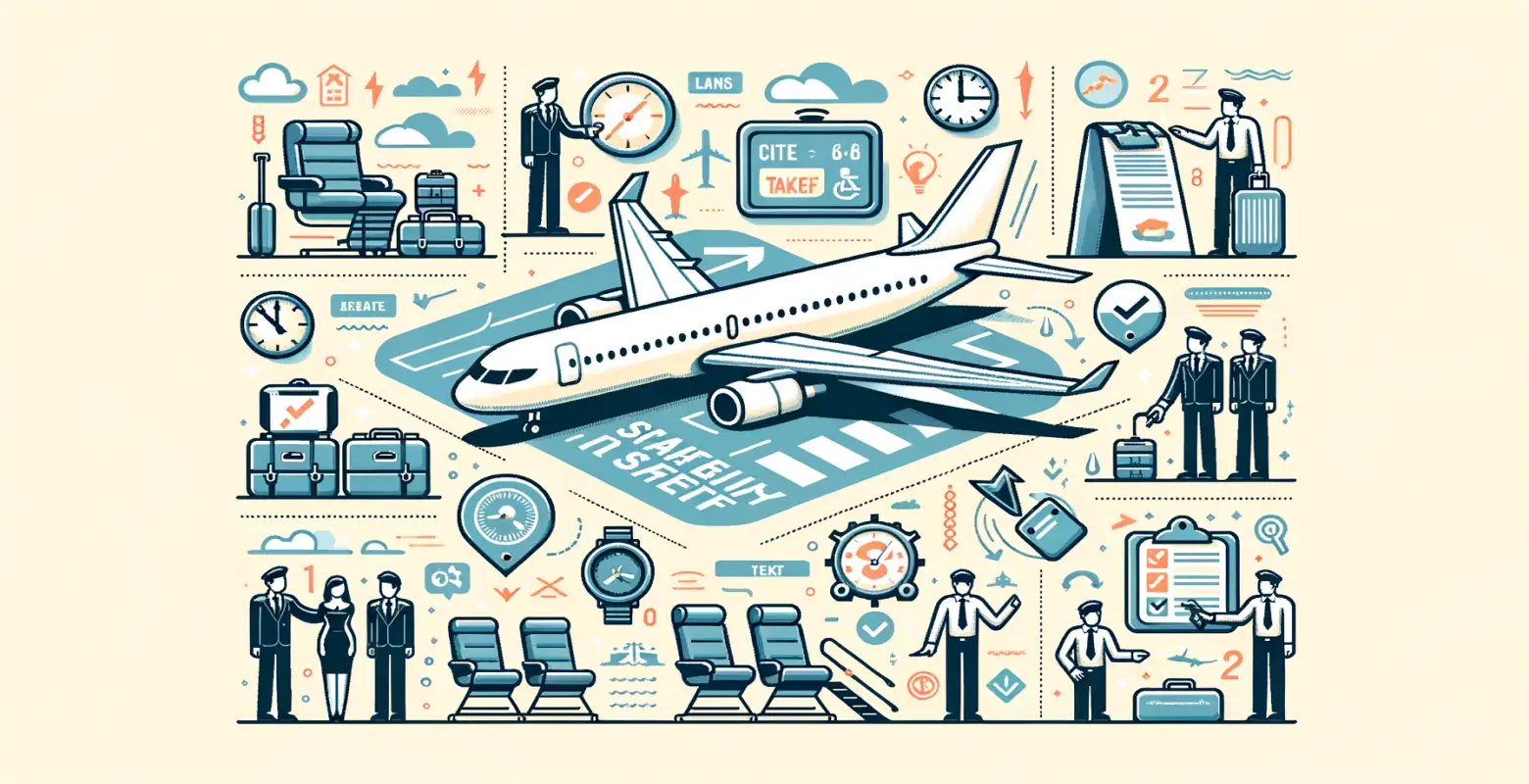What are the most important steps before takeoff and landing to ensure safety?
Introduction
Safety during takeoff and landing is a crucial aspect of air travel that directly impacts the comfort and safety of passengers and crew. Statistics show that the majority of aviation incidents occur during these two phases of flight. Therefore, understanding and implementing appropriate safety procedures is essential for both airlines and passengers.
In this article, we will examine the key steps taken before takeoff and landing to ensure the highest level of safety. We will also discuss the challenges and future trends related to these processes, as well as how technology and regulations can improve safety in the future.
Preparation before Takeoff
Aircraft Technical Inspection
Before each flight, the aircraft undergoes a detailed technical inspection. Mechanics check the condition of key components such as engines, hydraulic systems, and electrical systems. Any defects must be immediately rectified, and the aircraft will not be cleared for takeoff unless fully operational.
Crew Briefing
The crew must conduct a briefing before the flight, during which weather conditions, emergency plans, and any flight details are discussed. The pilot and first officer review the route, fuel levels, and other key aspects that may affect flight safety.
Procedures before Landing
Communication with Air Traffic Control Tower
As the aircraft approaches the destination airport, the crew initiates communication with the air traffic control tower to obtain current weather information and landing instructions. This is a crucial moment as precise information exchange ensures a safe and smooth landing.
Check of Onboard Systems
Before landing, the pilots perform a check of onboard systems such as navigation systems, brakes, and flaps. All systems must function flawlessly to ensure a safe touchdown of the aircraft.
Importance of Training and Simulation
Training for airline crews is essential to ensure safety. Pilots and cabin crew regularly participate in advanced simulations that allow them to prepare for various emergency scenarios. These training sessions also cover evacuation procedures, crisis management, and passenger communication.
Simulations enable the crew to test their reactions in controlled conditions, enhancing their readiness to take appropriate actions in real-life situations.
Challenges and Future Trends in Aviation Safety
Modern Technologies
The aviation industry is constantly evolving, and new technologies play a key role in enhancing safety. Automation, artificial intelligence, and advanced navigation systems allow for more precise flight management and detection of potential threats.
International Regulations
Organizations such as ICAO and EASA continuously update regulations regarding aviation safety to keep pace with changing conditions and technologies. International cooperation is crucial to ensure consistent safety standards worldwide.
Summary
Both takeoff and landing are critical phases of flight that require special attention and precision. Through rigorous procedures, advanced training, and modern technologies, aviation is becoming increasingly safe. In the future, we can expect further automation and innovation that will further enhance safety levels.
For passengers, this means greater comfort and assurance that all possible measures have been taken to ensure a safe journey. For the aviation industry, it is a constant challenge but also an opportunity for development and improvement of operations.
When traveling by airplane, it is important to remember that safety is the priority of every crew member, and all procedures, although sometimes invisible to passengers, are aimed at providing them with a peaceful and safe journey.






Number of comments: 0